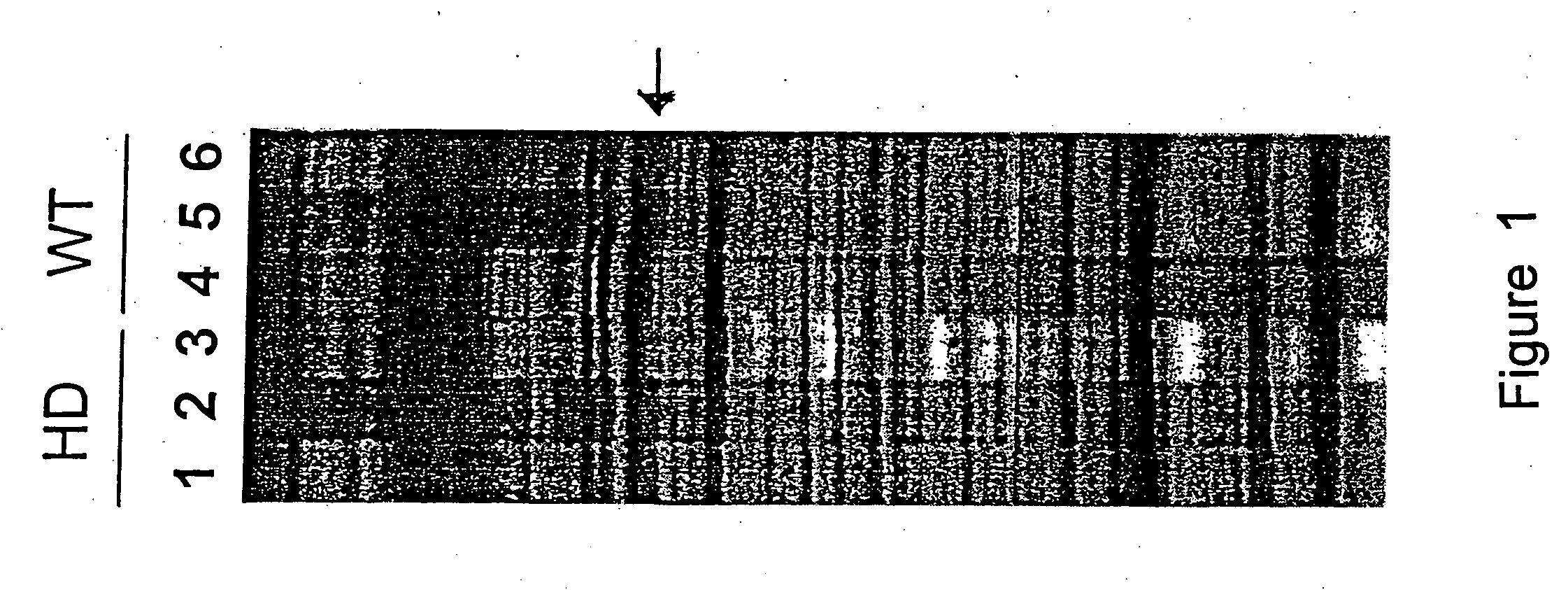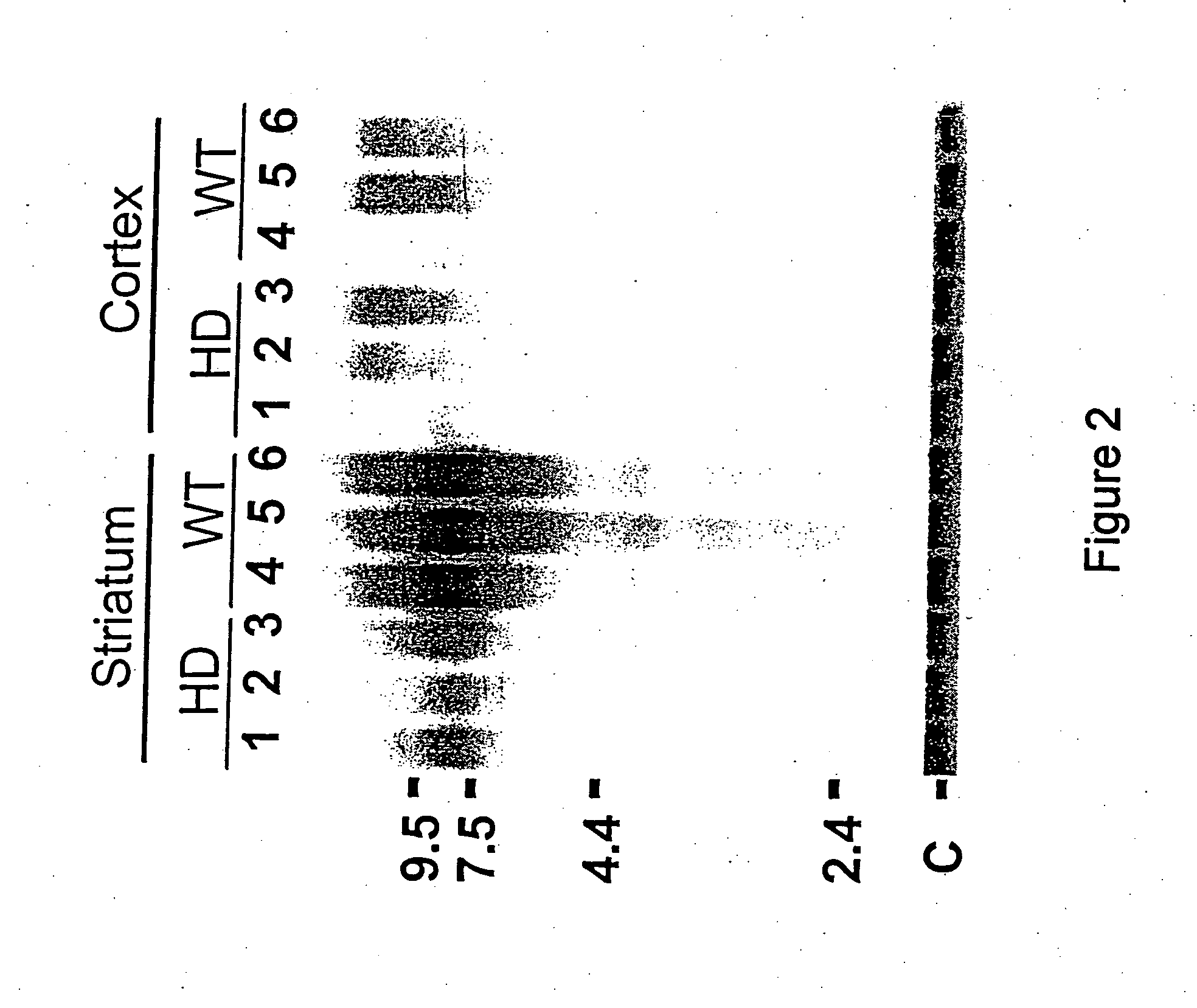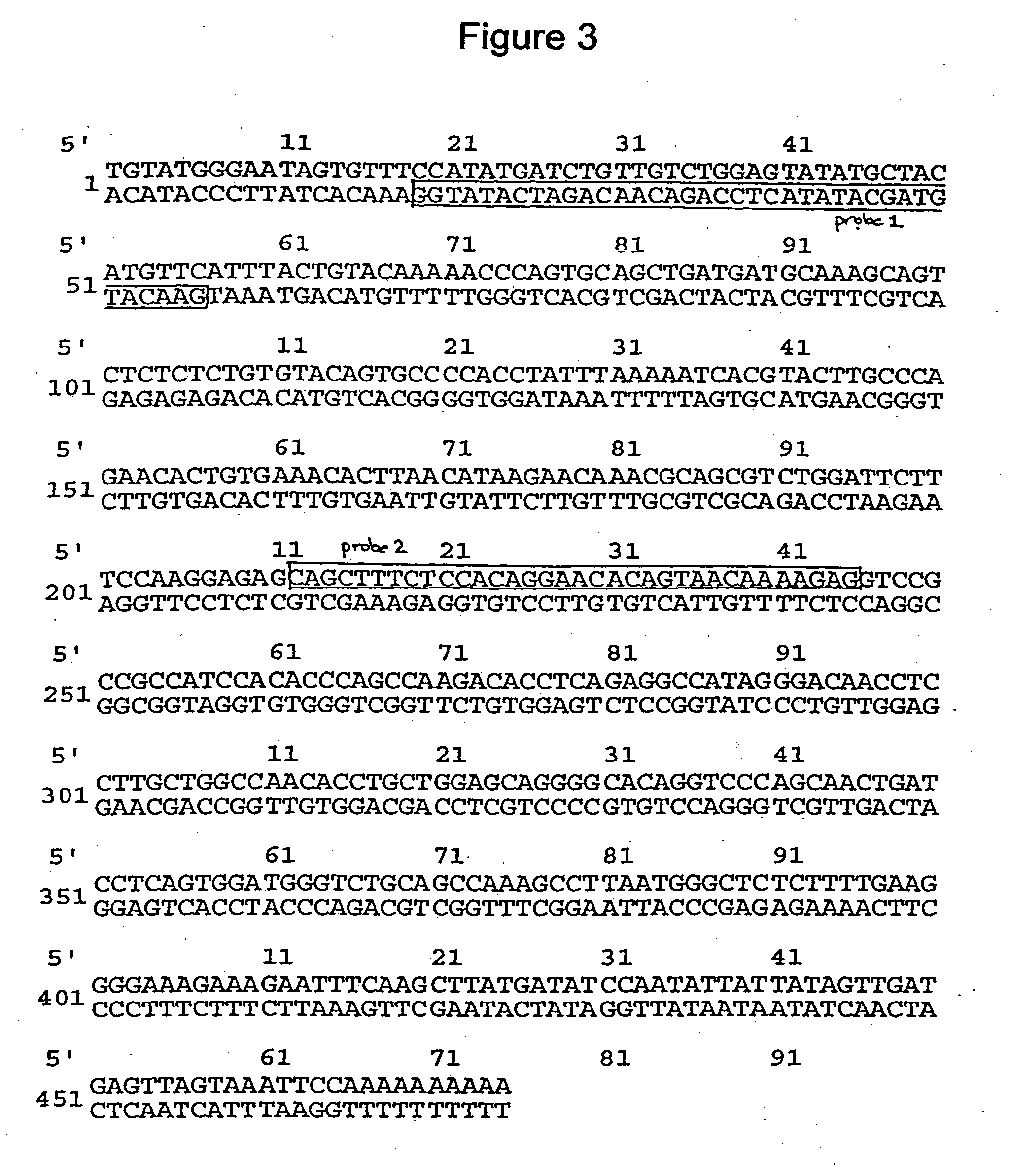Gene necessary for striatal function, uses thereof, and compounds for modulating same
a striatal function and gene technology, applied in the field of gene necessary for striatal function, can solve the problems of limited if any effective treatment for neurological disorders characterized by progressive cell loss, progressive and selective neuronal loss, and reduced striatal function,
- Summary
- Abstract
- Description
- Claims
- Application Information
AI Technical Summary
Problems solved by technology
Method used
Image
Examples
example 1
Isolation of PDE10A
[0136] Wild-type (B6CBAF1) and HD transgenic [B6CBA-TgN(Hdexon1)62Gpb] mice (Jackson Laboratories) and adult Sprague-Dawley rats (250-300 g; Charles River Laboratories) and were used in this study. The genotype of the mice was determined by PCR amplification of a 100 bp region of the integrated human HD exon 1 transgene using primers corresponding to nts 3340-3459 (5'-AGG GCT GTC AAT CAT GCT GG-3') and nts 3836-3855 (5'-AAA CTC ACG GTC GGT GCA GC-3') of clone E4.1 of the human HD gene (Accession number L34020). PCR conditions used are described in Mangiarini et al. (1996). DNA was extracted from a tail clip and an ear punch from each mouse used in this study. Both samples were subjected to PCR genotype analysis. For in situ hybridization analysis, the animals were anesthetized with >100 mg / kg sodium pentobarbital, decapitated, the brains removed and stored at -70.degree. C. prior to sectioning. For RNA isolation, animals were anesthetized, decapitated and the stri...
example 2
Cloning of PDE10A
[0142] The 500 bp band, designate PDE10Apcr, was excised from the dried gel and rehydrated in 40 .mu.L of H.sub.2O for 10 min at room temperature. The eluted DNA was subjected to PCR re-amplification using the P7 and T6 primers, rTaq polymerase (Pharmacia) and the following conditions: 60"@94.degree. C., 19.times.(30"@94.degree. C., 30"@58.degree. C., 120"@68.degree. C.+4" per cycle), 7"@68.degree. C. The PCR reaction was subjected to agarose gel electrophoresis and the 500 bp band was removed from the gel, extracted from the agarose using the Qiagen gel extraction protocol and cloned into the vector, pGem-T using standard methods. Plasmid DNA was isolated from selected transformants using Qiagen spin columns. The resultant clone was named pPDE10A.
example 3
Identification of PDE10A
[0143] The cloned insert of pPDE10A was radio-labelled and used as a hybridization probe in northern blot analysis (FIG. 2). Northern blots of total RNA were prepared using the method described in Denovan-Wright et al. (1998). The 500 bp cloned insert of PDE10A was radio-labelled with [-.sup.32P]dCTP (3000 Ci / mmol) using the Ready-to-Go dCTP beads (Pharmacia). Northern blot hybridization, brain tissue preparation and in situ hybridization are described in Denovan-Wright et al. (1998). The 500 bp cloned insert of pPDE10A annealed to a transcript of approximately 9.5 kb in total RNA isolated from the striatum of ten week-old wild-type mice.
[0144] FIG. 2 demonstrates that PDE10A is expressed in the striatum but not the cortex of wild-type mice and the steady-state levels of PDE10A are reduced in 10 week old transgenic HD mice. The differential expression of PDE10A in HD mice was confirmed by northern blot analysis. The cloned insert of pPDE10A was radio-labelled...
PUM
| Property | Measurement | Unit |
|---|---|---|
| Gene expression profile | aaaaa | aaaaa |
| Fluorescence | aaaaa | aaaaa |
| Physical properties | aaaaa | aaaaa |
Abstract
Description
Claims
Application Information
 Login to View More
Login to View More - R&D
- Intellectual Property
- Life Sciences
- Materials
- Tech Scout
- Unparalleled Data Quality
- Higher Quality Content
- 60% Fewer Hallucinations
Browse by: Latest US Patents, China's latest patents, Technical Efficacy Thesaurus, Application Domain, Technology Topic, Popular Technical Reports.
© 2025 PatSnap. All rights reserved.Legal|Privacy policy|Modern Slavery Act Transparency Statement|Sitemap|About US| Contact US: help@patsnap.com



